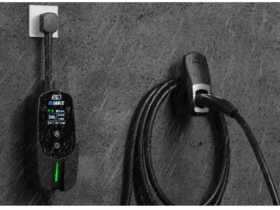As a healthcare provider, one of the most critical aspects of your practice is revenue cycle management (RCM). An efficient RCM process ensures you get paid accurately and on time for the services you provide.
However, managing the complex billing and coding requirements can be challenging.
Here are 10 tips to help you optimize your revenue cycle management and boost your bottom line:
1. Keep Up with Coding Changes
Medical coding is constantly evolving. Stay current on the latest coding updates, especially the annual ICD-10 and CPT code changes. Proper coding is essential for clean claims and timely reimbursement.
2. Verify Patient Eligibility
Confirm each patient’s insurance coverage before their appointment. Verifying eligibility helps prevent claim denials and reduces time spent on collections. Use automated eligibility verification tools whenever possible.
3. Collect Patient Payments Upfront
Establish a policy to collect copays, deductibles, and coinsurance at the time of service. Patients are more likely to pay when physically present than after receiving a bill later. Train your front desk staff on tactfully requesting payment.
4. Submit Clean Claims
Double check each claim for accuracy before submission. Common errors include incorrect patient information, missing codes, and mismatched ICD and CPT codes. Claims scrubbing software can help identify mistakes before they cause denials.
5. Follow Up on Denials Promptly
Don’t let denied claims linger in your billing system. Investigate each denial to determine if it can be corrected and resubmitted. Many denials are recoverable with the right modifications and supporting documentation.
6. Measure and Benchmark Key Metrics
Track important revenue cycle KPIs like days in accounts receivable, clean claim rate, and denial rate. Compare your metrics to industry benchmarks to identify areas for improvement. Share results with your team regularly.
7. Embrace Revenue Cycle Technology
The right RCM technology can significantly boost your efficiency and results. Look for a comprehensive, integrated platform that automates eligibility, claims, denials, collections, and reporting. Many healthcare practitioners are partnering with revenue cycle management companies to leverage their advanced RCM systems and expertise.
8. Educate Patients on Their Financial Responsibility
Help patients understand their coverage and out-of-pocket costs. Provide clear financial policies and payment options. Educated patients are more likely to pay their portion and less likely to be surprised by their bill.
9. Streamline Patient Collections
Make it easy and convenient for patients to pay their balance. Offer online payments, recurring payment plans, and credit card on file. Use an automated collection system to send reminders and track patient payments.
10. Collaborate with Payers
Foster positive relationships with your top payers. Understand their policies, fee schedules, and reimbursement methodologies. Participate in their provider education sessions.
A collaborative approach can lead to cleaner claims and faster payment.
Here’s a comparison of key revenue cycle functions handled in-house vs outsourced:
| Function | In-House | Outsourced |
| Eligibility Verification | Manual process | Automated using advanced tools |
| Coding | Requires certified coders on staff | Leverages large team of certified coders |
| Billing & Claims | Billing software | Comprehensive RCM platform |
| Denials Management | Handled by billing team | Dedicated denials specialists |
| Reporting & Analytics | Limited to billing software capabilities | Robust BI and analytics tools |
By implementing these revenue cycle management best practices, you can increase your clean claims, reduce denials, accelerate cash flow, and spend more time on patient care. Consider whether your practice has the tools, expertise, and capacity to optimize RCM in-house.
Partnering with an experienced RCM company may be the most effective way to maximize your revenue while minimizing administrative burdens.











Leave a Reply